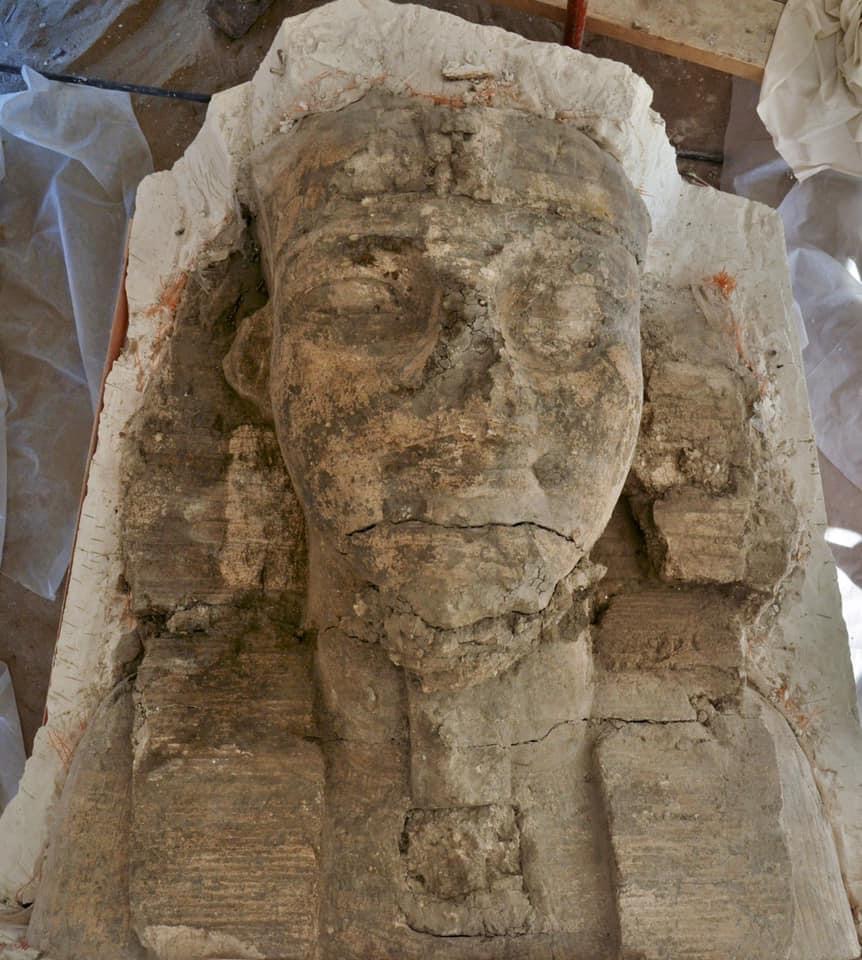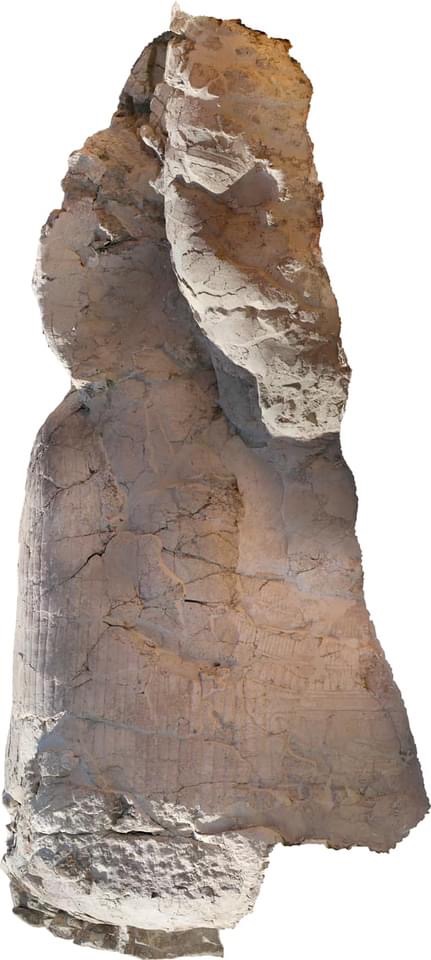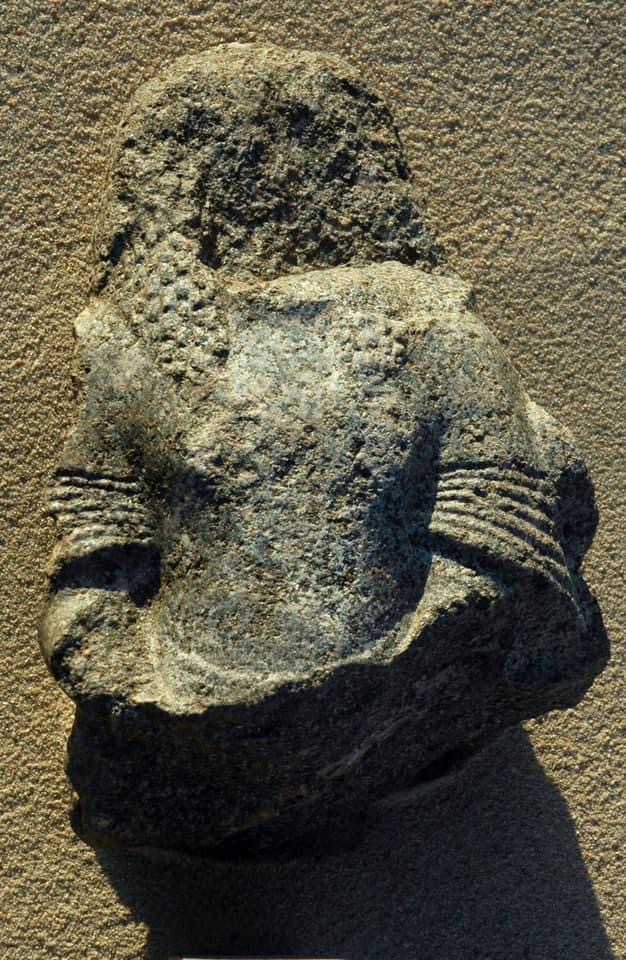CAIRO - 15 January 2022: German-Egyptian mission working in the temple of Amenhotep III as part of ‘The Colossi of Memnon and Amenhotep III Temple Conservation Project managed to discover a group of massive limestone pieces that belong to two royal sphinxes, the remains of walls and columns decorated with ritual scenes in Luxor.

Secretary General of the Supreme Council of Antiquities Mostafa Waziri announced that the Egyptian-German mission headed by Hourig Sourouzian discovered blocks from a pair of huge limestone statues of king Amenhotep III in the shape of sphinxes wearing the nemes headdress, the royal beard, and a wide collar around his neck.

The two sphinxes massive statues were discovered half submerged in water at the end of the gateway of the third pylon.
The heads of these sphinxes were cleaned and consolidated, pieces of their inscribed chest were recovered during the clearance, one of them holds the end of the royal name who is “the beloved of Amun-Re.”
The head of the archaeological mission explained that this discovery is important because the two colossal sphinxes leads to the start of the processional way leading from the third pylon to the Peristyle Court, this was the place where the beautiful ‘Festival of the Valley’ was celebrated annually, in addition to jubilee festivals of the king in the last decade of his reign.
She further added that the initial research on these colossal sphinxes reveals that their height was about 8 metres. All the uncovered blocks and colossi are now under restoration in order to place them later in their original location in the temple.

Three busts and three lower parts of statues of the lioness goddess Sekhmet were discovered by the mission at the façade of the Peristyle Court and in the Hypostyle Hall of the temple.
The mission also succeded to uncover pieces of the sandstone wall decoration depicting scenes of the Heb-sed, the jubilee festival of Amenhotep III, and offering scenes to multiple deities.
A small granodiorite statue of an official and his wife, most probably dates back to the post-Amarna period was also discovered..
Column bases and foundation blocks were also uncovered in the Hypostyle Hall indicating that this hall was much larger than it was known and used to contain more columns.
It is worth mentioning that the ‘Temple of Millions of Years’ was the largest funerary temple on the West Bank, however, it was destroyed by a massivd earthquake.
Comments
Leave a Comment